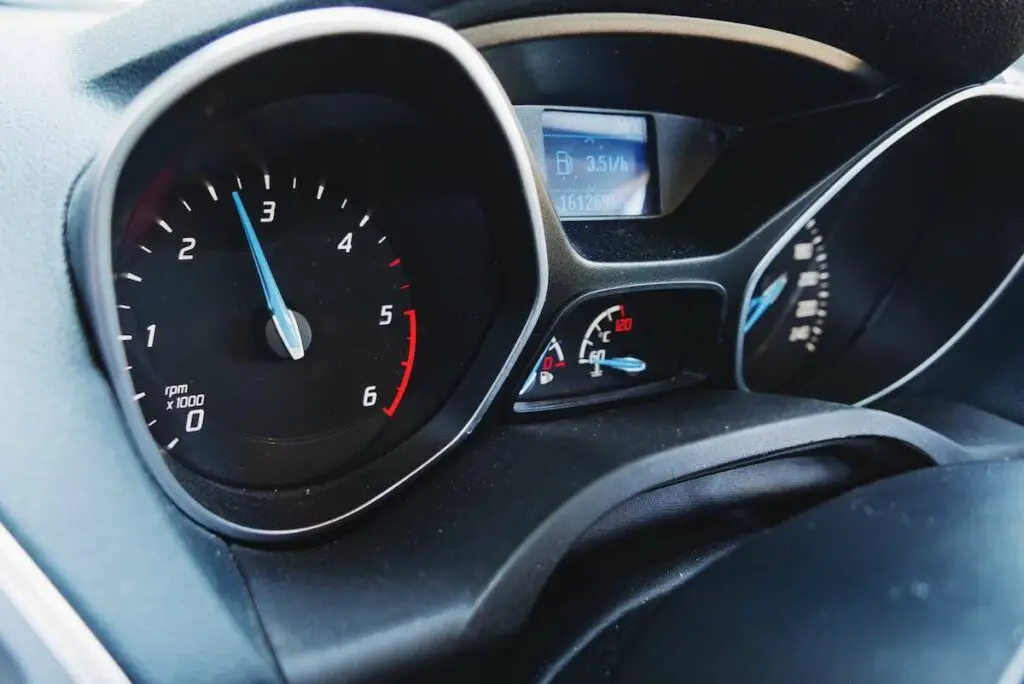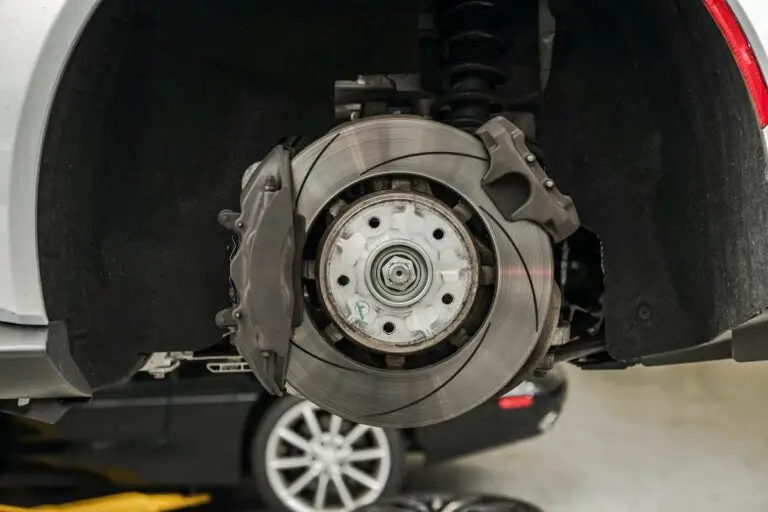Car Won’t Accelerate Past 40? Here’s Why And What to Do!
Modern cars are packed full of safety features. These features reach much further than traction control, ABS and airbags. These are safety features that will prevent the vehicle from catastrophic failure, which may lead to an accident. Let us explore one of these features and find out what can cause a car to not accelerate past 40 mph.
If a vehicle does not want to accelerate past 40 mph, the ECU may have detected a problem forcing it into a limp home mode. This is a feature that is designed to allow the vehicle to drive to a safe area or repair shop without causing further damage to the engine.
Read on to discover what limp mode is, what may cause the vehicle to enter into it and how to reset it?
Pro Tip: If your car battery is dead, don’t throw it away! Check out this tutorial on how to bring your dead battery back to life and save a lot of money! This little known method is simple, quick and works for almost ANY battery out there!
What Is Limp Mode?
Limp mode or limp home mode is a feature activated by the car’s onboard computer (ECU) to protect the engine and transmission against damage. The mode is activated when the computer detects any irregular readings from the array of sensors on the vehicle or if improper mechanical operation occurs.
Limp mode is designed to prevent catastrophic engine failure while still allowing some functionality to assist the driver to “limp home” or drive to get assistance. In diesel engines, this mode is commonly called “engine derate” mode.
The vehicle’s performance will be vastly reduced, and acceleration will be sluggish. Still, the car will be safe to drive for a few miles or to the nearest auto repair shop. When the limp mode is activated, it signifies that something on the car needs to be addressed.
Once the limp mode has been activated, your car will just not respond to the accelerator beyond a point no matter how hard you step on it.
Common Indications Of Limp Mode
There are 3 common indications when a vehicle is in limp mode. If the vehicle is showing any of these indications, have it inspected to prevent any further damage.
- Restricted speed – Limp mode will restrict the engine’s RPMs to less than 3,000. This will affect the vehicle’s speed, which will be in the 35 to 45 mph range. This will allow the vehicle to drive at a low high-way speed.
- Slow Acceleration – The vehicle’s acceleration will be sluggish, and the engine may shudder or misfire. Automatic transmissions may stay in low gear to prevent the engine from stalling, and manual transmissions should not shift past 3rd gear.
- Illuminated check engine light – the check engine light will illuminate or flash when the car is in limp mode. If any other warning light illuminates (high temp or oil pressure), stop the vehicle as soon as possible.
What Can Cause The Vehicle To Enter Into Limp Mode?

Many factors can cause a vehicle to enter into limp mode. The most common culprit is usually some sort of dirt or clogging of one or the other critical parts of the car. This can be because of dusty environments the car is subjected to, if your car has gone through a puddle or water, lack of servicing, or other factors.
This usually throws an error in the car’s ECU forcing the car to enter into limp mode.
These can be minor faults that can be easily rectified or more severe faults that may cause a breakdown. If minor faults persist, the vehicle’s computer may perceive a problem and enter limp mode. So, let’s start with the basics.
1. The Easy To Fix Faults
These faults are easy to notice and can be fixed at home.
- Driving at altitude – when driving at a high altitude (a high mountain pass), the vehicle may lose up to 20% of its power. This is due to the reduced oxygen and nitrogen in the air. The low oxygen can send some O2 sensors into a frenzy triggering limp mode.
To fix this, simply switch the engine off and on again when at a lower altitude.
- Emergency Brake on – If the emergency brake is not disengaging or stays partially engaged, it will cause brake drag. To overcome the friction, the engine must work harder, resulting in the brakes emitting lots more heat.
Both these faults will trigger the limp mode. To fix this, switch off the engine and let the brakes cool down. Disengage the emergency brake fully and start the engine.
- Dirty Fuel – When the fuel in the tank is old, contaminated, or of low quality, it can clog fuel lines and filters. Bad gas may even cause misfiring in the engine, which will cause catastrophic damage. But low fuel pressure, clogged filter, or bad gas can trigger the limp home mode.
To fix this, clean out the lines, fill up with new fuel and let the engine run for a few minutes.
2. Dirty Serviceable Part Faults
Dirty serviceable parts such as filters and sensors may cause the vehicle to enter limp mode. The faults are best fixed by a professional as they are not easy to diagnose.
- Dirty or damaged Spark Plugs – dirty spark plugs and damaged ignition wires may cause misfires in the engine.
- Clogged Air Filter – a dirty or clogged air filter will prevent sufficient air into the cylinder. This will cause excess unburnt fuel to exit the cylinder, triggering the O2 sensor.
- Clogged Fuel Filter – If any debris from the fuel tank is pushed through the fuel lines, the fuel filter is supposed to catch it. When the fuel filter is clogged up, it restricts the fuel flow to the engine.
- Clogged Fuel Injector – Low-quality fuel can clog up the fuel injectors. This prevents not enough fuel from entering the cylinder and will cause engine knock.
- Dirty Sensors – a dirty or faulty Mass Flow sensor (MAF) or Oxygen sensor (O2) will send faulty readings to the vehicle’s computer.
3. Technical Faults
The technical faults can be worn-out components that need replacing. This will need to be done by a professional as these may have other faults associated with them.
- A Faulty or Damaged Clutch – If the clutch is not engaging or disengaging correctly, it will make the engine work harder, and overheating may occur
- Faulty ECU – All the sensors throughout the vehicle send information to the Electronic Control Unit (ECU). If faulty, it may trigger various fault codes resulting in the vehicle entering into limp mode.
- Malfunctioning Throttle Position Sensor (TSP) – The TPS constantly monitors the throttle inputs made by the driver’s foot. It then sends this data to the vehicle’s ECU, which will adjust the throttle. Any faulty reading from this sensor will trigger limp mode as it may cause erratic acceleration of the vehicle.
- Worn Timing Belt – if the crankshaft sensor and the timing give conflicting information to the ECU, it will trigger limp mode to reduce the stress on the timing belt.
- Faulty Catalytic Converter – A faulty catalytic converter will increase the back pressure in the exhaust manifold, which will drastically reduce engine power. The catalytic converter will then begin to overheat, which may result in a fire.
How To Bypass Limp Mode?
If the car is in a limp mode and there are no suspicious noises or smells emanating from the engine, the following method may reset the Limp home mode. If the vehicle re-enters the limp home mode, there may be a larger fault that is occurring.
1. Check The fluids
Find a safe area to stop the vehicle, preferably on level terrain. Leave the engine running and check the transmission fluid. If the fluid is low or smells burnt, this may be the fault that triggered the limp mode. If possible, replace or top up the fluid.
2. Turn The Engine Off And Restart
Turn the engine off and wait at least 5 minutes for the ECU to power down. While waiting, check the oil level, fuel/air filters, belts, and wiring to see if there are any noticeable problems.
If not, restart the engine. A faulty sensor will often reset after powering down and then function normally.
3. Clear The Check Engine Light
Clear the illuminated Check Engine Light by disconnecting the battery cables. Remove both cables off the battery, and hold them together for 15 to 20 seconds. This will drain any remaining voltage from the ECU and cause it to clear any codes that may be stored.


![Do Cars Have Trackers? [Everything You Should Know!]](https://vehicleuniversity.com/wp-content/uploads/2023/01/gps-system-in-a-smart-car-2022-12-15-23-13-58-utc-768x512.jpeg)
![Do Manual Cars Have Cruise Control? [Full Guide!]](https://vehicleuniversity.com/wp-content/uploads/2023/01/cruise-control-unit-in-the-new-car-close-2021-08-28-19-59-46-utc-768x572.webp)

![Difference Between Tire and Wheel? [Complete Guide!]](https://vehicleuniversity.com/wp-content/uploads/2023/01/men-working-in-the-warehouse-with-tires-2022-01-19-00-27-19-utc-768x576.webp)
![How Many Amps is a Car Battery? [Complete Guide!]](https://vehicleuniversity.com/wp-content/uploads/2023/01/Depositphotos_6733694_XL-768x576.webp)

